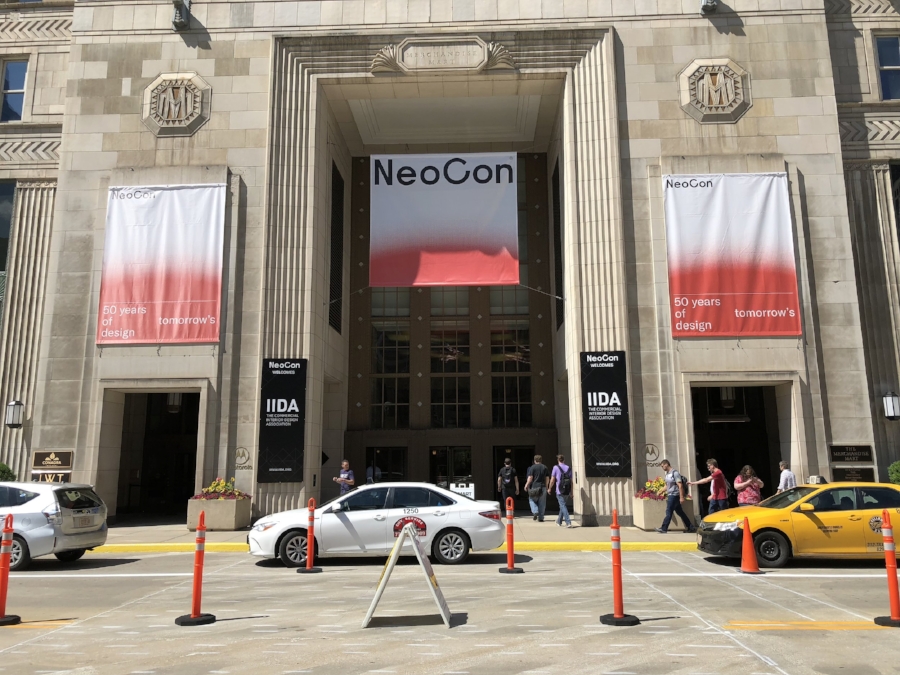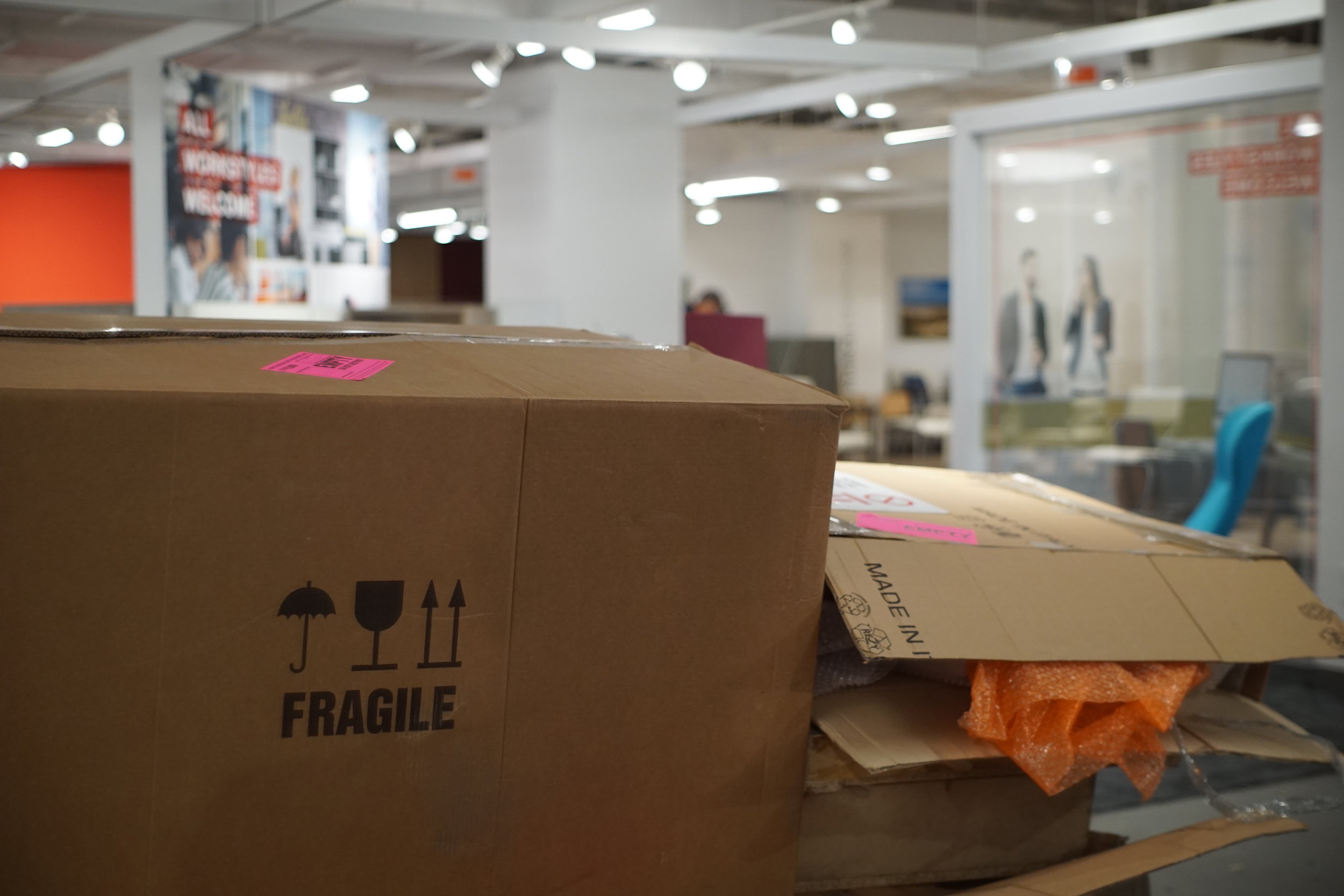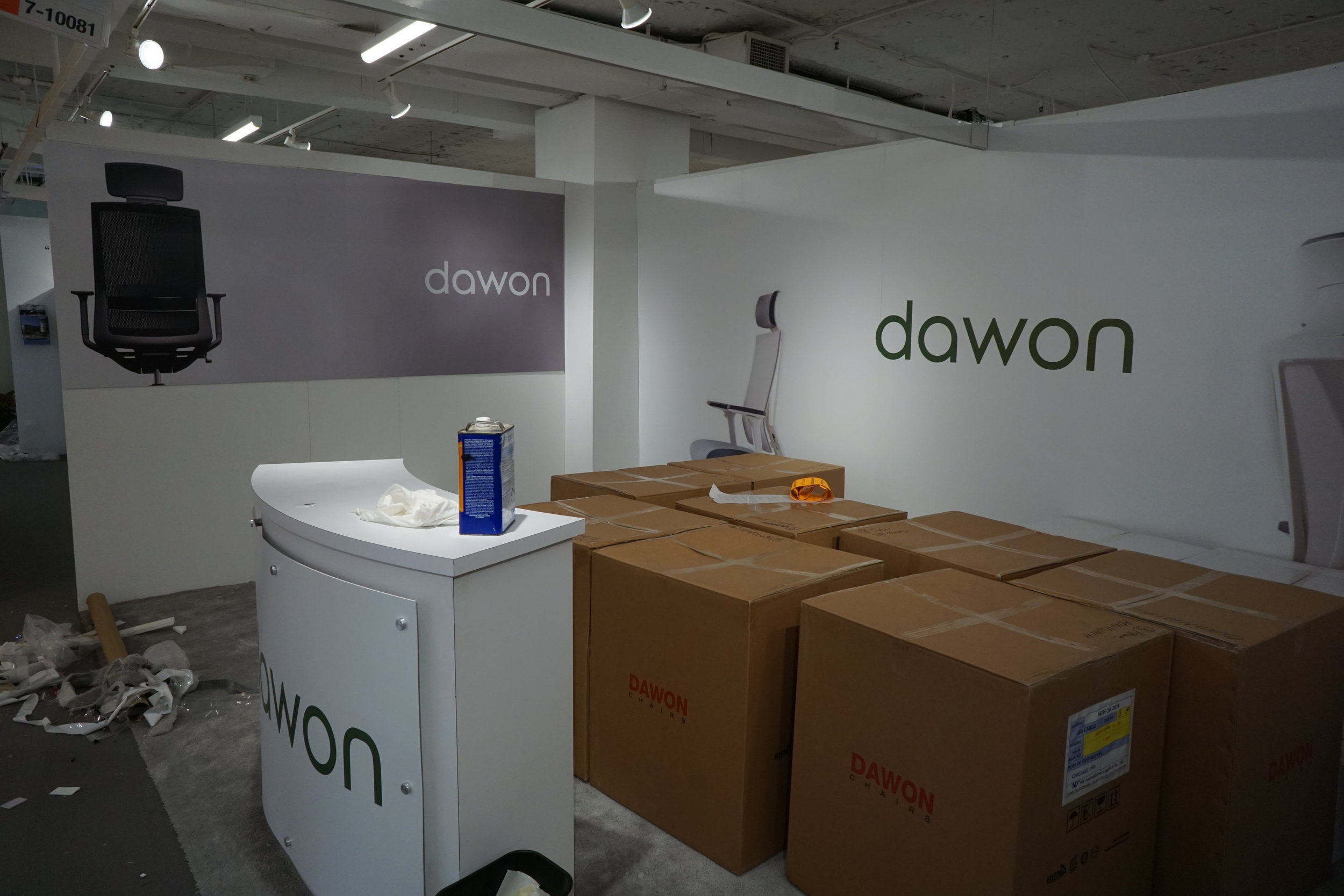On the eve of the 50th anniversary of NeoCon, a pervasiveness fills the air in the Merchandise Mart, home to the largest commercial furnishings show in North America. Contract furniture manufacturers, specifically office furniture makers, are facing what amounts to an existential threat to their very existence. "Exhibit One" is the rapid pace of late of the thinning of their ranks.
Quietly, and almost unnoticed, office furniture makers in the United States, and indeed worldwide, have been being acquired or have been disappearing outright at an alarming pace.
The fact is that most (if not all) executives in the industry have been blindsided by the techtonic shifts in the workplace and the very nature of work itself. Long gone are they days of large or small cubicles and their myriad kit of parts and pieces - all of which, over many decades, amounted to (very) sustainable income streams for the entire contract chain, from designers to dealers, installers to dozens and dozens of makers. That calculus has changed. Today the industry is increasingly being dominated by the largest and best capitalized companies, but that in and of itself means little. The largest producers in the industry; Steelcase, Herman Miller, Haworth, Knoll, HON and Teknion all are facing increasingly gloomy prospects of profitably selling office furniture into a marketplace that is at best unsettled, and at worse, doesn't much need a lot of their product.
“What’s so interesting (and boring) about the contract furniture industry today is that its main players are pretty much the same players that were in place 40 years ago - all having roughly the same market share.”
A few decades ago, as a reporter who frequented the office furniture salons of Western Michigan, I asked the newly minted Steelcase executive Jim Hackett what he foresaw as the future of the workplace, and more specifically Steelcase's role in it. He laughed I recalled, no doubt thinking it was an absurd questions for someone without a crystal ball. But Hackett, ever the guy with an answer (UofM fans can add their comments), said he saw companies needing nothing more than "perhaps tables and chairs."
At the time, I wasn't sure he actually believed it, but as it turns out, he was pretty dead on in a general sense. In fact, looking at the hundreds of articles and thousands of photos detailing today's workplaces in the pages of CFN, I've come to the conclusion he was right, whether or not he actually thought so himself at the time.
The Buzz that Killed
Capturing most of the industry buzz these days is the concept known as "resimercial" a combination of residential and commercial. More deeply meaning commercial quality furniture made to look like it could be used in your (modern) home and conversely make your workplace look more relaxed with a residential feel. This however isn't by itself a recipe for success. In fact, contract furniture makers were initially so unsure of the trend that they did their best to ignore it for as long as possible. Week after week industrial furniture designers would present manufacturers with sketches of what they foresaw was the future look of the workplace and its furniture, and week after week they were rejected. BUT is it a trend that will be sustainable? Maybe, but Bernhardt, one of the first to capture the trend, is gone entirely from NeoCon and the Mart. Where art thou Bernhardt?
About five years ago however, manufacturers, after having seen the return of foosball tables, coffee bars and overstuffed sofas dotting the landscape of tech offices in Silicon Valley began to understand, if not believe, that something was up. Young workers it seems, were rejecting cubicles and even the once prized private office en mass. What they wanted, what they expected was a more collaborative workplace. A place that wasn't all that different than what many had experienced in college. After all, collaboration in the learning environment has been the all the rage since 1970. Everybody was working in teams, on projects in library spaces that had been converted from carrells to sofas. To successfully work in college meant that you had to work with others. Individual, silent studying had gone the way of the land line. In fact, the Internet opened up the world of collaboration on a scale never before seen. On a scale that caught everyone off guard.
So, in some sense, we all need to pity the poor office furniture makers who thought producing rows and rows of cubicles was a business that was never going to end. Thousands of parts and pieces all with huge list prices that still netted a very good profit even after 50/10 discounts. Naturally they were as surprised as anyone when orders for panels, overheads and worksurfaces began to sink a decade or so ago, seemingly without warning (and to some without notice).
Fast forward to today, the start of NeoCon week (technically three days), you'll find while walking the Mart, that the industry's current problems are on display in nearly every nook and cranny.
First, the eighth floor exhibit space in the Mart has disappeared entirely. Once home to lots and lots of (mostly forgettable) makers of generic chairs and tables, the eighth floor was useful for spotting an occasional insight into future workplace ideas. No longer. The seventh floor still houses smaller (no showroom) industry survivors, but just barely. Many of these companies come next year will be gone, victims of the death of a once bright entrepreneurial spirit that used to infuse the industry, but has now faded.
What's so interesting (and boring) about the contract furniture industry today is that its main players are pretty much the same players that were in place 40 years ago - all having roughly the same market share. The relative position within the sales lineup hasn't changed much at all. No brilliant idea has catapulted any of them into first place ahead of Steelcase, and yet Steelcase like the others, find themselves wandering around in the same maze searching for the magic key to growth and profitability. Steelcase has (belatedly) realized future growth will only come about by acquisition. So into the M&A game they jump.
The industry itself of course hasn't kept up with other industry's in terms of growth (or profitability) either. No, the makers of office furniture have pretty much been in a financial holding pattern for the past 20 years. They all built (and now are mostly gone) giant headquarters facilities, design yards, modern automated factories - all with the hope of accelerated growth. It mostly didn't happen, and now they have come to realize it won't, at least by internal growth alone.
So, as you may have noticed, the industry has been on a buying binge for the past 15 years or so, accelerating rapidly over the past year or so. The bottom line being what it is, and many of the companies being public (or at least once were), the march to higher sales and the holy grail of short term returns on investment, meant buying rather than building their futures. But, buying a future is a lot different than actually building one. Just ask GE.
And so as we take to waiting for the elevators in the Mart this week, we would do well to remember just how fragile the industry remains. And we need to ponder whether or not Steelcase can make the West Elm deal work for dealers (unlikely I would suggest), whether or not they can actually manage being the largest maker of educational furniture (catch those customers from kindergarten on), whether or not the Haworth (and Steelcase and Knoll and Teknion and Herman Miller) model of shoveling European products into an invented portfolio works (or should we label it what it really is - laziness).
And finally of course, someone will inevitably bring up the threat of China. Which, at the end of the day, isn't a threat at all. Even the current president isn't worried about Chinese office furniture (but tomorrow he might be, who knows). That aside, the Chinese will continue to produce plenty of parts and product (mostly our designs or bland generic stuff) for our current manufacturers (oh yes they do). But in the long run, unless they are willing to buy one of the big 10 (or big 5), they will never succeed selling their own brand of furniture here. It turns out we have a wall that doesn't allow most players in, not even our own. That wall has grown taller and taller decade after decade. I would suggest, that if you don't have a solid Class A dealer distribution system for your furniture, you're toast, or are soon going to be toast. Goodbye izzy (and izzy+). The B and C dealer ranks are also shrinking daily and are pretty much sidelined on large and midsize projects.
And so, as everyone predicted decades ago, the industry now finds itself in the final consolidation phase. A real consolidation phase that can't be dismissed no matter how much we want to wish it away. There will be plenty of losers in the short term. Many are on display this week (perhaps for the last time). Wish them well on their journey. The industry, at long last, and sadly, is Woke.
Michael Wolf, Chief Curator, cfn.news







